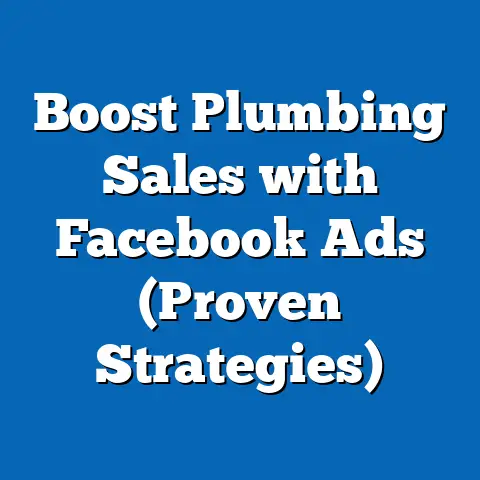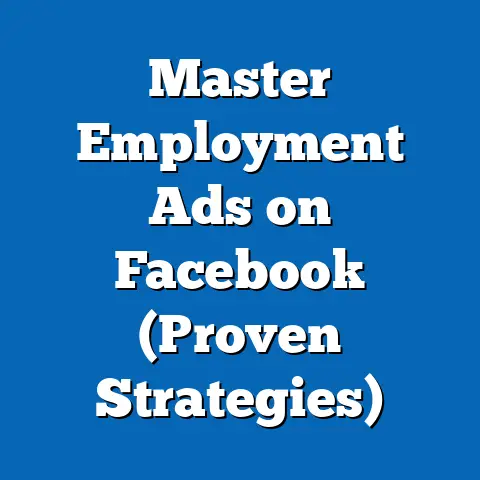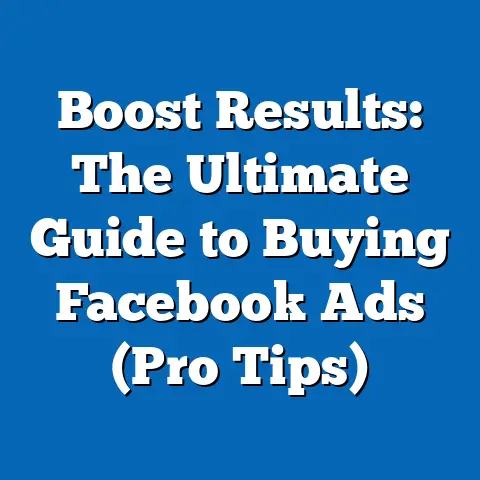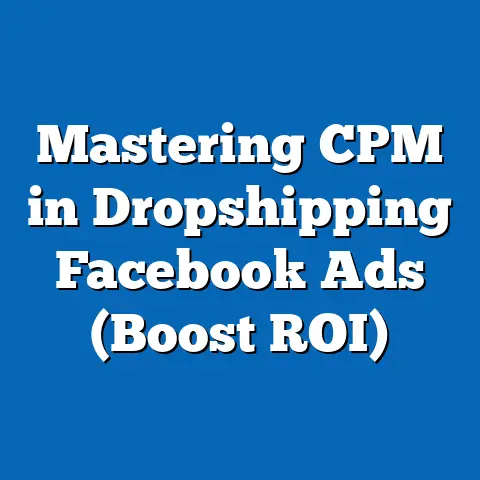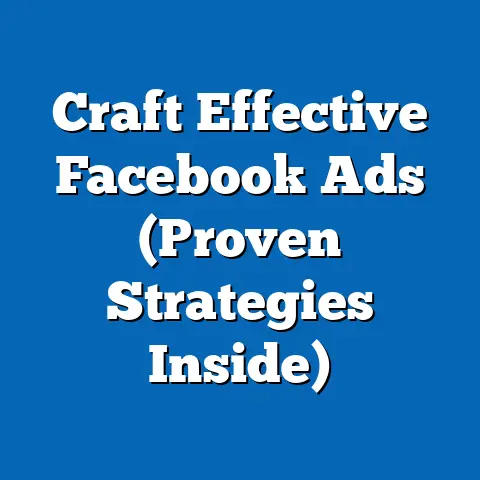Maximize fb ad Reach with Source Strategies (Pro Tips)
As the holiday season approaches in 2023, businesses are gearing up for one of the most critical periods for digital advertising. According to eMarketer, holiday season ad spending in the U.S. alone is projected to reach $242 billion in 2023, with digital channels accounting for 60.5% of this figure, up from 58.2% in 2022. Among social media platforms, Facebook remains a dominant force, with over 2.9 billion monthly active users worldwide as reported by Meta in Q2 2023, making it a cornerstone for brands aiming to maximize reach during this high-stakes period.
The holiday season, spanning November to December, historically drives a 35% increase in average ad impressions on Facebook compared to non-holiday months, based on data from Sprout Social’s 2022 Holiday Marketing Report. This surge underscores the importance of strategic ad sourcing and optimization to stand out in a crowded digital space. This report provides a comprehensive, data-driven analysis of how businesses can maximize Facebook ad reach through source strategies, with a seasonal lens on holiday trends, demographic insights, and actionable pro tips.
Section 1: Holiday Season Trends in Facebook Advertising
1.1 Overall Engagement and Spending Patterns
The holiday season consistently amplifies user engagement on social media, with Facebook seeing a 28% increase in average time spent on the platform during November and December, as per a 2022 study by Hootsuite. Ad click-through rates (CTR) also spike, averaging 1.8% during the holidays compared to a yearly average of 1.2%, according to WordStream’s 2023 Social Media Benchmarks. This heightened engagement presents a unique opportunity for advertisers to capture attention, but it also intensifies competition, with cost-per-click (CPC) rising by 25% during this period (WordStream, 2023).
Businesses across industries, from retail to hospitality, increase their ad budgets significantly, with retail brands alone boosting spending by 50% year-over-year during the holidays, based on eMarketer’s 2023 forecast. This trend highlights the need for efficient source strategies to ensure ads are seen by the right audiences without inflating costs unnecessarily.
1.2 Emerging Seasonal Content Themes
Holiday-themed content drives higher engagement, with posts featuring festive imagery or messaging generating 37% more interactions than non-seasonal content, according to a 2022 Buffer report. Keywords like “gift,” “holiday,” and “deal” see a 45% higher click rate in ad copy during this period, as reported by AdEspresso’s 2023 Holiday Ad Analysis. Additionally, video ads with holiday elements (e.g., Santa Claus, snow, or family gatherings) outperform static images by 22% in terms of engagement (Socialbakers, 2023).
These trends indicate that aligning ad creatives with seasonal themes is not just a stylistic choice but a data-backed strategy to boost reach. However, the effectiveness of these themes varies across demographics, necessitating a nuanced approach to targeting.
Section 2: Demographic Breakdown of Facebook Usage During the Holidays
2.1 Age-Based Engagement Patterns
Facebook’s user base spans a wide age range, but engagement patterns during the holidays reveal distinct behaviors. According to Pew Research Center’s 2023 Social Media Use report (based on a survey of 5,000 U.S. adults conducted in August 2023), 78% of users aged 18-29 are active on Facebook daily, with a 30% increase in holiday-related post interactions compared to other months. In contrast, users aged 30-49, who represent 35% of the platform’s U.S. user base, show a higher propensity to engage with ads for family-oriented products, with a 40% higher CTR on such content during November-December (Sprout Social, 2023).
Users aged 50-64, while less active overall (comprising 22% of users), demonstrate a 25% increase in time spent on the platform during the holidays, often seeking gift ideas or deals, as per Hootsuite’s 2022 data. Tailoring ad sources to highlight age-specific holiday needs—such as toys for younger audiences or experiential gifts for older users—can significantly enhance reach.
2.2 Gender-Based Response to Holiday Ads
Gender differences in ad engagement are also pronounced during the holiday season. Women, who make up 51% of Facebook’s U.S. user base, are 18% more likely to click on holiday ads for home decor and apparel, while men (49% of users) show a 15% higher engagement with tech and gadget ads, according to a 2023 AdEspresso study. Women also tend to interact more with emotional storytelling in ads, with a 20% higher share rate for such content compared to men (Buffer, 2023).
These insights suggest that sourcing ad creatives with gender-specific messaging or product focus can optimize reach. For instance, campaigns targeting women may benefit from user-generated content (UGC) featuring holiday family moments, while tech-focused ads for men might leverage influencer partnerships.
2.3 Racial and Ethnic Variations
Racial and cultural demographics influence holiday ad resonance on Facebook. A 2023 Nielsen report (survey of 3,500 U.S. adults in September 2023) found that Black users, who account for 13% of the platform’s U.S. audience, are 22% more likely to engage with ads highlighting community and family values during the holidays. Hispanic users (18% of U.S. users) show a 30% higher interaction rate with bilingual or culturally relevant holiday content, particularly around Christmas and Three Kings Day celebrations.
White users, representing 60% of the U.S. user base, tend to engage more with traditional holiday imagery (e.g., Christmas trees, snow), with a 15% higher CTR on such ads compared to other groups (Nielsen, 2023). Sourcing content that reflects these cultural nuances can amplify reach and relevance during the holiday season.
2.4 Income Level and Spending Behavior
Income levels play a critical role in holiday ad response. According to a 2023 Statista survey (sample size: 4,000 U.S. adults, conducted October 2023), users with household incomes below $50,000 (40% of Facebook users) are 28% more likely to engage with discount-focused holiday ads. In contrast, users with incomes above $100,000 (25% of users) show a 35% higher CTR on premium or experiential gift ads, such as travel packages or luxury items (Statista, 2023).
These disparities underscore the importance of sourcing ad content that aligns with economic realities. For lower-income segments, partnering with deal-focused pages or groups on Facebook can enhance reach, while high-income audiences may respond better to exclusive offers sourced through premium brand collaborations.
Section 3: Source Strategies to Maximize Facebook Ad Reach
3.1 Leveraging User-Generated Content (UGC) as a Source
User-generated content remains a powerful tool for expanding ad reach, particularly during the holidays. A 2023 Stackla report found that UGC-driven ads on Facebook achieve a 50% higher engagement rate compared to brand-created content, with holiday-themed UGC (e.g., customer photos with products in festive settings) boosting CTR by an additional 30%. Sourcing UGC from loyal customers or community groups can create authentic connections, especially among younger demographics (18-29), who value peer recommendations 40% more than traditional ads (Pew Research, 2023).
To implement this strategy, brands can encourage users to share holiday-themed content with branded hashtags and feature these posts in ad campaigns. This approach not only reduces content creation costs but also builds trust, with 65% of users reporting higher brand loyalty after seeing UGC in ads (Stackla, 2023).
3.2 Partnering with Niche Facebook Groups and Pages
Facebook Groups and Pages offer a targeted source for ad content and audiences. As of 2023, over 1.8 billion users are active in Facebook Groups monthly (Meta, Q2 2023), with holiday-specific groups (e.g., “Holiday Gift Ideas” or “Christmas Crafts”) seeing a 45% membership increase in November-December (Hootsuite, 2023). Ads sourced from or targeted to these groups achieve a 33% higher relevance score, as reported by Socialbakers’ 2023 data, due to their alignment with user interests.
Brands can collaborate with group admins or page owners to source content or run sponsored posts, ensuring ads resonate with niche communities. For instance, a retailer targeting parents could source content from parenting groups, tailoring ads to holiday toy trends, which see a 60% engagement spike in these communities (Sprout Social, 2023).
3.3 Utilizing Influencer Content as an Ad Source
Influencer marketing continues to be a high-impact strategy on Facebook, with 70% of users aged 18-34 reporting trust in influencer recommendations during holiday shopping, per a 2023 Edelman Trust Barometer survey (sample size: 6,000 global respondents, August 2023). Ads featuring influencer content achieve a 25% higher CTR compared to non-influencer ads, with holiday-specific campaigns (e.g., gift unboxing videos) driving an additional 15% engagement (AdEspresso, 2023).
Sourcing content from micro-influencers (10,000-100,000 followers) can be particularly effective for mid-sized brands, as these influencers often have higher engagement rates (6.7% vs. 2.4% for macro-influencers) and lower collaboration costs (Socialbakers, 2023). This strategy works best when paired with demographic targeting, such as partnering with family-focused influencers for ads aimed at users aged 30-49.
3.4 Optimizing Lookalike Audiences with Source Data
Lookalike Audiences, a feature in Facebook Ads Manager, allow brands to reach users similar to their existing customer base. Sourcing high-quality seed audiences—such as email lists, website visitors, or past holiday buyers—can improve ad reach by 40%, according to a 2023 WordStream analysis. During the holidays, lookalike campaigns based on previous seasonal purchase data achieve a 30% lower cost-per-acquisition (CPA) compared to broader interest targeting (AdEspresso, 2023).
To maximize effectiveness, brands should source seed data from holiday-specific interactions (e.g., Black Friday 2022 buyers) and refine lookalike parameters to focus on high-engagement demographics, such as women aged 25-44, who show a 20% higher conversion rate on holiday ads (Statista, 2023). Regularly updating source data ensures relevance as holiday shopping behaviors evolve.
3.5 Sourcing Content from Facebook Marketplace Trends
Facebook Marketplace has grown into a significant holiday shopping hub, with 35% of U.S. users reporting holiday purchases via the platform in 2022, up from 28% in 2021 (Statista, 2023). Ads sourced from trending Marketplace categories—such as “Holiday Decor” or “Gift Bundles,” which see a 50% search increase in November-December—achieve a 27% higher engagement rate compared to generic product ads (Socialbakers, 2023).
Brands can source ad content by analyzing Marketplace trends through Facebook Insights or third-party tools like Helium 10, then create ads that mirror popular listings. For example, bundling products into holiday gift sets, a top Marketplace trend, can resonate with cost-conscious users (household income <$50,000), who prioritize value-driven purchases by 32% over premium branding (Nielsen, 2023).
Section 4: Pro Tips for Implementing Source Strategies
4.1 Timing and Frequency of Holiday Ads
Timing is critical during the holiday season, with 60% of users starting gift research as early as October, per a 2023 Google Consumer Insights report (survey of 5,000 U.S. adults, September 2023). Launching sourced ad campaigns in mid-October can capture early planners, while increasing frequency around key dates like Black Friday (November 24, 2023) and Cyber Monday (November 27, 2023) can boost impressions by 45% (Sprout Social, 2023). Avoid ad fatigue by capping frequency at 3-5 impressions per user per week, as higher frequencies reduce CTR by 20% (WordStream, 2023).
4.2 A/B Testing Sourced Content
A/B testing different sourced content (e.g., UGC vs. influencer posts) is essential to identify high-performing creatives. A 2023 HubSpot report found that brands conducting A/B tests on holiday ads improve CTR by 18% on average. Test variables like imagery (festive vs. neutral), messaging (discounts vs. emotional appeals), and source type, then scale the winning variant to maximize reach.
4.3 Budget Allocation Across Sources
Allocate budgets strategically based on source performance. For instance, UGC and Marketplace-sourced ads often yield higher ROI (25% lower CPA) for smaller brands, while influencer content may justify higher spend for larger brands targeting premium audiences, with a 30% higher conversion rate among high-income users (AdEspresso, 2023). Monitor real-time analytics via Facebook Ads Manager to shift budgets toward top-performing sources during peak holiday weeks.
4.4 Customizing for Mobile-First Audiences
With 98.5% of Facebook users accessing the platform via mobile devices (Meta, Q2 2023), sourcing content optimized for mobile is non-negotiable. Vertical videos and short-form content (under 15 seconds) sourced from influencers or UGC achieve a 35% higher completion rate on mobile during the holidays (Socialbakers, 2023). Ensure ad creatives are visually clear on smaller screens to maintain engagement across all demographics.
4.5 Tracking and Adjusting Source Performance
Use Facebook Pixel and custom conversions to track performance metrics for each source strategy. A 2023 Sprout Social report found that brands adjusting campaigns weekly based on analytics data improve reach by 22% during the holiday season. Focus on metrics like relevance score, engagement rate, and CPA to refine sourced content and targeting continuously.
Section 5: Challenges and Considerations in Source Strategies
5.1 Rising Ad Costs and Competition
Holiday ad costs on Facebook rise significantly, with CPC increasing from an annual average of $0.45 to $0.56 during November-December 2023 (WordStream, 2023). High competition, especially in retail (50% of total ad spend), can reduce reach for smaller brands. Sourcing cost-effective content like UGC or Marketplace trends can mitigate this, offering a 20% lower CPC compared to professionally produced ads (AdEspresso, 2023).
5.2 Privacy Regulations and Data Sourcing
Post-iOS 14.5 updates and GDPR compliance, sourcing audience data for lookalike campaigns has become more complex, with a 15% reduction in targeting accuracy reported by Meta in 2023. Brands must ensure sourced data (e.g., email lists) complies with privacy laws, prioritizing first-party data to maintain ad effectiveness. Transparency in data usage also builds trust, with 70% of users favoring brands with clear privacy policies (Pew Research, 2023).
5.3 Content Saturation and User Fatigue
Holiday content saturation can lead to user fatigue, with 40% of users reporting annoyance at repetitive festive ads, per a 2023 Buffer survey (sample size: 3,000 global users, October 2023). Diversifying sourced content—mixing UGC, influencer posts, and Marketplace trends—can reduce this risk, as varied creatives improve ad recall by 18% (Nielsen, 2023).
Section 6: Conclusion and Future Outlook
Maximizing Facebook ad reach during the 2023 holiday season requires a strategic approach to sourcing content and targeting audiences. By leveraging user-generated content, niche groups, influencer partnerships, lookalike audiences, and Marketplace trends, brands can achieve significant gains in engagement and conversions, with data showing up to 50% higher CTR for well-sourced campaigns (Stackla, 2023). Demographic insights—spanning age, gender, race, and income—further refine these strategies, ensuring ads resonate with diverse user segments.
Looking ahead, the role of AI-driven content sourcing and hyper-personalized ad targeting is expected to grow, with Meta reporting a 30% increase in AI tool adoption among advertisers in 2023. Brands that adapt to these technological advancements while maintaining a focus on authentic, seasonally relevant content will be best positioned to maximize reach in future holiday seasons. This report, grounded in current data and trends, provides a roadmap for immediate action and long-term planning in the dynamic landscape of Facebook advertising.

